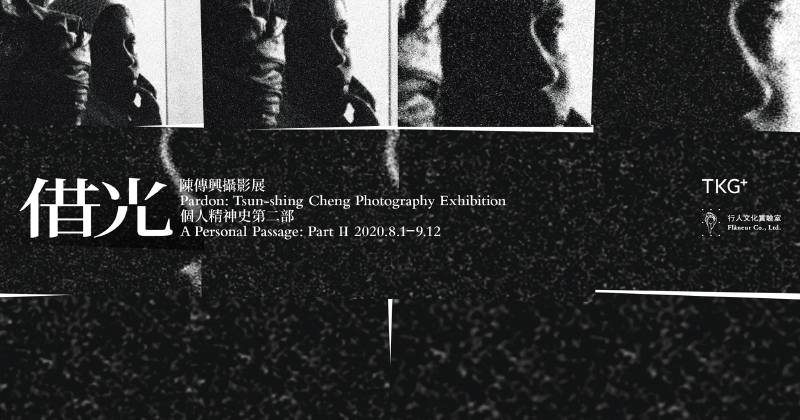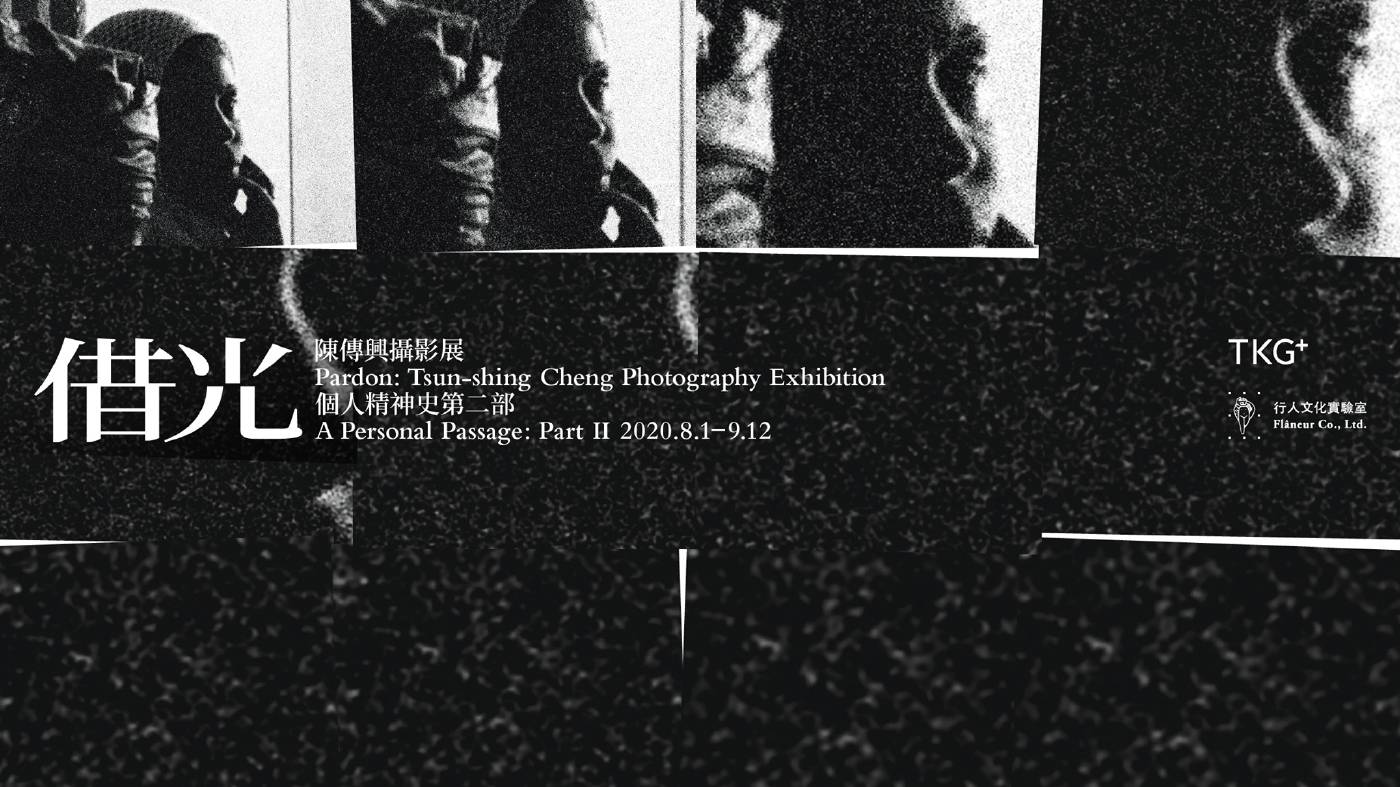TKG+
【借光陳傳興攝影展 】個人精神史第二部

-
展期
日期:2020-08-01 ~ 2020-09-12
-
地點
114 台北市內湖區瑞光路548巷15號B1
-
參展藝術家
陳傳興
-
借光:陳傳興攝影展 個人精神史第二部
展期|2020.8.1-9.12
開幕酒會|2020.8.1(六)4:30 p.m.
地點|台北市內湖區瑞光路548巷15號B1
陳傳興用其前半生蒐集影像,並在此後半生藉影像敘述他的生命。
自1975年以「蘆洲浮生圖」為題於幼獅藝廊展出後,長達四十多年的時間陳傳興未在台灣展覽,這個名字在台灣終只停留在數本美學與攝影文論,及一系列「他們在島嶼寫作」的紀錄片製作中。然而陳傳興在這段時間來並未停滯過他的攝影工作,他對銀鹽影像的執拗,促使他將過去四十年間的底片猶如生命文本般收執著,直至近五年因自覺時機合宜後才陸續釋放。
他藉自己所拍攝的影像,將其生命化約為五個章節的生命史,曾於2015年展出的「未有燭而後至」是第一部曲,橫跨1973至1978年間,陳傳興於台灣各地浪遊所攝;而甫於2019年展出的第二部曲「螢與日」,是他自1976年至1980年間遊歷歐美各地的視野。1976年陳傳興至法國留學,成為此二部曲間的一個重要分水嶺,在此前陳傳興未受專業規訓,因生逢變故讓死亡成為他一生追尋的課題,遊走於廢墟、送葬隊伍、野台、城市與鄉野間,眾多的面容與荒景,顯見其對故里人情的深刻關懷,彼時的陳傳興猶如其自述提及的「執燭者」──那位尚未成年的引路人,默然地在無光之處引燭旁觀,同時也因燭光而照見自身。到了法國後,陳傳興以他的相機見證那個追逐哲學思潮直至顛狂的「諸神的黃昏」年代,於法國接受專業的哲學與攝影訓練又因自幼家業的環境習慣與勞動者互動,在異鄉的陳傳興面對勞動者更顯親切而精準地攝下不同族群的面容。兩個生命階段的陳傳興,皆透過相機以一種觀察之姿攝影所視,在影像中他的關懷皆表述其中。
攝影對陳傳興透過先前的兩次展覽探尋這些積累了四十年的影像本質,對他而言,攝影是一項生命的活動,因此他不曾過贅地設計影像,只是質樸的觀察與拍攝。相機裡的暗室與放曬底片的暗房是孕育影像的子宮與溫室,底片猶如胎盤載著影像直至它成像於相紙之上,當數位影像以訊號與陣列儲存的方式擬仿影像的生成機制,使當代影像猶如免洗塑膠物一般唾手可得之時,陳傳興透過銀鹽工藝提醒著光成像的物質性不可逆,是攝影美學最為核心的實踐。將自己埋入暗房的攝影工作者,絕非只單純是對傳統工藝的懷想,它更深層地回應了攝影作為一種如繪畫等古典顯像媒介,勞動作用於工作者精神層面的課題──在快門之後、顯像之前的這段工作,在歷史長流中總顯得幽晦而遙遠,但陳傳興對銀鹽工藝的堅持,便將這些遁隱於黑暗中的美學再現於光下。
此次展覽是陳傳興在1975年後再一次於台灣展出,以「借光」為題闡述其攝影生涯在台灣此地的迴返,除此之外也有打擾、寬恕之意,是在四十多年後再次於故鄉展出的謙讓之意。本次展覽概括了第一與第二部曲的內容,並在展覽期間分成兩階段展出,陳傳興希望能藉此以鄰近的時序並置兩個曾發生於異時異地的內容,重識台灣觀眾已然陌生的攝影者身份。
▎關於陳傳興
陳傳興,法國高等社會科學學院語言學博士,行人文化實驗室創辦人,國立清華大學副教授,2012年獲頒法國藝術與文學勳位(軍官勳章)。 他長期耕耘美學、哲學、精神分析與影像論述等領域,同時是攝影家、藝術評論學者、作家與電影創作者。1975年於台北舉辦攝影個展《蘆洲浮生圖》、2015年北京中央美術學院美術館及上海民生現代美術館舉辦攝影個展《未有燭而後至》、近期2019年於上海龍美術館舉行大型攝影個展《螢與日》 。曾參與2009年廣州廣東美術館、2018年台中國立台灣美術館及日本清里攝影美術館的攝影群展。
----
Pardon: Tsun-shing Cheng Photography Exhibition
A Personal Passage, Part II
Dates|2020.8.1-9.12
Reception| 2020.8.1 (Sat.) 04:30 p.m.
Venue|B1, No. 15, Ln. 548, Ruiguang Rd., Neihu Dist., Taipei, Taiwan 114
Tsun-shing Cheng spent the first half of his life meticulously collecting photographic negatives. In the latter half, he is using these images to construct a narrative of his life.
It has been over 40 years since Cheng’s last exhibition in Taiwan, "Life in Luzhou", at the Young Lion Gallery in Taipei in 1975. His name has only been seen in a few books on aesthetics and photography theory, as well as in the credit list of a series of documentaries titled "The Inspired Island". However, Cheng has never ceased photography during his absence. His obsession with silver halide photography compelled him to preserve the negatives he accumulated over the past 40 years as if they were the pages of a precious memoir, but he did not begin developing the photographs and displaying them until five years ago, when he felt the time was right.
In the last five years, Cheng has been extracting images from his 40-year archive and organizing them into five chapters of his life story. The first chapter, "Won’t Somebody Bring the Light", was first exhibited in 2015, which includes photographs he took from 1973 to 1978 during his travels across Taiwan. His second chapter, "Firefly and Light", which was recently exhibited at the end of 2019, encapsulates his journeys throughout Europe and America between 1976 and 1980. Cheng went to France to study in 1976, and this experience became a pivotal moment in his photography career. Prior to this, he had not received any formal academic training. Death became the heart of his life-long investigation. The images of architectural ruins, funeral processions, outdoor stages, cities, and the countryside, and the numerous faces and wasteland captured through his lens demonstrate his deep concern and fondness for his homeland. At that time, Cheng was — as he describes in a personal statement — much like “the one who holds the candle,” a young guide silently leading others through the darkness by candlelight, while the dim glow of its flames reflects gently upon him. After arriving in France, he received professional training in philosophy and photography. He documented through his lens an era defined by the frantic pursuit of philosophical thought until the breaking point of "Götterdämmerung", or the collapse of a society. While there, he frequently interacted with laborers, a tendency he carried over from his childhood, having been immersed in the environment of his family business. His candid portraits of workers and everyday people manifest the human condition with an exquisite tenderness in each of his subjects, who span a diversity of age, gender, and ethnicity. While the settings and circumstances of these two chapters of his life are dramatically different, the viewer is encouraged to experience both through the artist’s careful, discerning gaze.
Through the previous two exhibitions, Cheng excavates the essence of his 40-year-old images. He views photography as an intrinsic part of life, so he never followed a set pattern or purposely composed his images; he simply observed and shot. The camera obscura and the darkroom, where films are processed, bear witness to the conception of an image and the birth of a photograph. The negative carries the image until it is developed on photographic paper. In an era where digital images mimic the chemical process of image development by means of signal transfer and pixel storage, and the contemporary making of images is as accessible as disposable utensils, Cheng insists upon the silver halide process, through which the material nature of light imaging is irreversible, a practice that attests to the nucleus of photography. The photographer who buries himself in the darkroom is not merely nostalgic for traditional craftsmanship. He responds more deeply to photography as a classic visual medium, much like painting, and to the role of manual labor on a spiritual level. What happens between the click of the shutter and the development of an image has always been obscure and distant, but Cheng’s adherence to the gelatin silver process uncloaks the aesthetics formerly submerged in darkness.
Tsun-shing Cheng’s first exhibition in Taiwan since 1975, its title "Pardon" alludes to the photographer’s return to Taiwan after a long absence, while also expressing his humble plea for acceptance in his homeland. The exhibition comprises his first two series, which go on view consecutively. It is Cheng’s hope that this juxtaposition serves as a chance for Taiwanese viewers to experience what has been captured through his lens in different places and in different periods, allowing them to become re-acquainted with his work, as well as his steadfast identity as a photography artist.
推薦展覽
view allGina Hong Guang (積吶虹光)
【國立臺灣大學醫學院附設醫院.TW|愛與和平 : 青天白日滿地「虹」心球與攝影之旅 - 積吶虹光LEF】TW|Love and Peace : Rainbows From All Over the World - Gina Hong Guang(LEF)
日期:2024-12-06 ~ 2025-01-26|台灣,台北市
44 days left